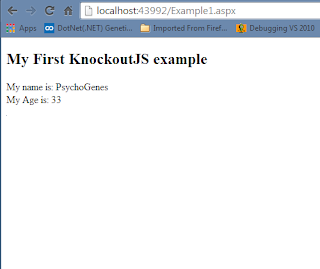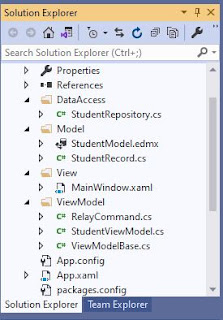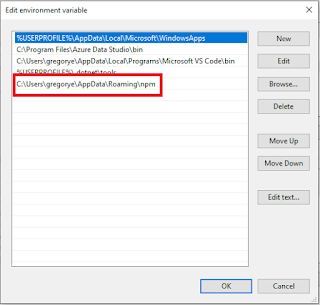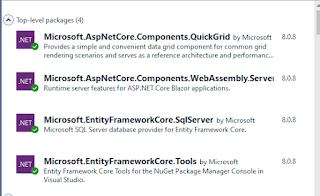Simple Knockout.js Example In ASP.NET Web Forms
Intrigued with emerging Javascript framework called knockout, I decided to try a simple example myself.
As defined by Wikipedia:
Knockout is a standalone JavaScript implementation of the Model-View-ViewModel pattern with templates. The underlying principles are therefore:
1. A clear separation between domain data, view components and data to be displayed
2. The presence of a clearly defined layer of specialized code to manage the relationships between the view components
The features of Knockout are based on Declarative bindings:
A. Automatic UI refresh (when the data model's state changes, the UI updates automatically)
B. Dependency tracking
C. Templating (using a native template engine although other templating engines can be used, such as jquery.tmpl)
I come to a conclusion that this has similar approach to WPF MVVM.
So, to get started with, download the latest Knockout.js framework here: Knockout Home Page and add reference to your html or aspx markup:
Code:
Running aspx page:

Cheers! :)
As defined by Wikipedia:
Knockout is a standalone JavaScript implementation of the Model-View-ViewModel pattern with templates. The underlying principles are therefore:
1. A clear separation between domain data, view components and data to be displayed
2. The presence of a clearly defined layer of specialized code to manage the relationships between the view components
The features of Knockout are based on Declarative bindings:
A. Automatic UI refresh (when the data model's state changes, the UI updates automatically)
B. Dependency tracking
C. Templating (using a native template engine although other templating engines can be used, such as jquery.tmpl)
I come to a conclusion that this has similar approach to WPF MVVM.
So, to get started with, download the latest Knockout.js framework here: Knockout Home Page and add reference to your html or aspx markup:
Code:
<!DOCTYPE html> <html xmlns="http://www.w3.org/1999/xhtml"> <head runat="server"> <title>Simple Knockout JS</title> </head> <body> <form id="form1" runat="server"> <h2>My First KnockoutJS example</h2> <div> My name is: <span data-bind="text: personName"></span><br /> My Age is: <span data-bind="text: personAge"></span> </div> <script type="text/javascript" src="Scripts/knockout-3.1.0.js"> </script> <script type="text/javascript"> var myViewModel = { personName: 'PsychoGenes', personAge: 33 }; ko.applyBindings(myViewModel); </script> </form> </body> </html>

Cheers! :)



Comments
Post a Comment